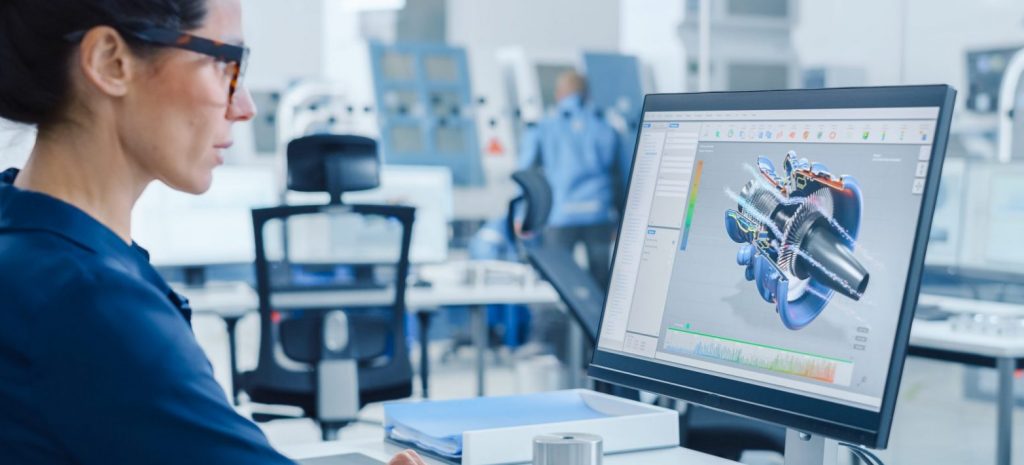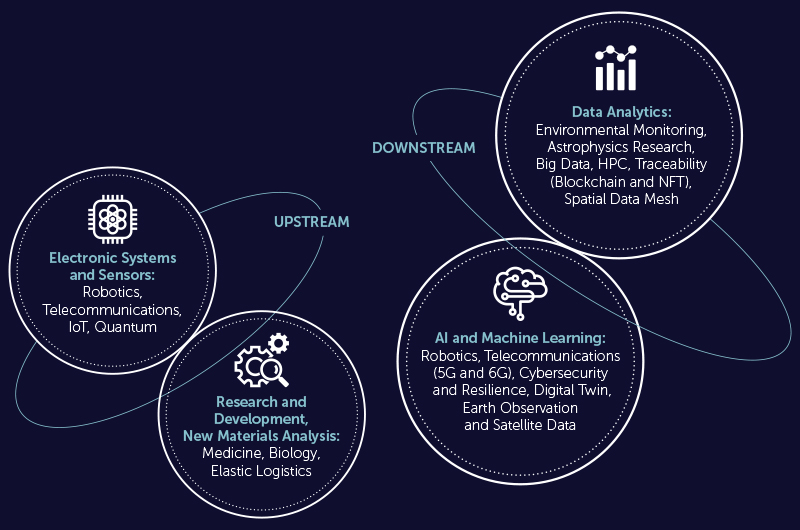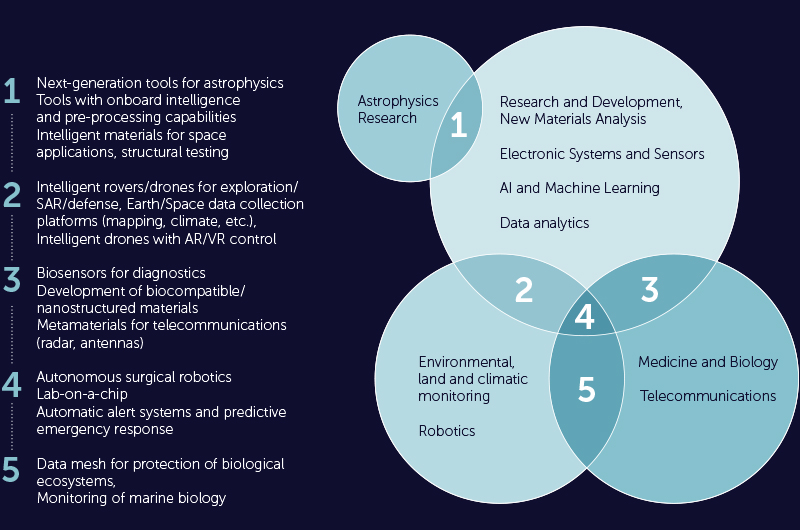TECHNOLOGY AND AEROSPACE IN FRIULI VENEZIA GIULIA
A region ready for take-off

Friuli Venezia Giulia is renowned for its pursuit of technological evolution, the driving force behind the Region’s economic and cultural development.
The role in the aerospace field now being played by the territory’s universities, research centers, and larger and smaller businesses is instead lesser known.
Industry and technology
There are 16.4 innovative start-up companies for every 100,000 inhabitants in Friuli Venezia Giulia.
More than two-thirds of the region’s innovative start-ups provide services, particularly in software development and IT consulting, scientific research and development, and information services. This is the perfect basis for developing a space downstream ecosystem formed by applications based on Earth Observation data.
The largest patent portfolio in Friuli Venezia Giulia pertains to the field of Life Sciences, followed by Energy and Cleantech. The most important macro category is Mechanical Engineering (Machine Tools, Processes, Sensors).
Research
The Promotion Board of the Alpe Adria Aerospace Technology Cluster includes most of the protagonists in the field of research in the FVG region:
- AREA Science Park
- CNR (National Research Council)
- Elettra Sincrotrone
- ICGEB (International Centre for Genetic Engineering and Biotechnology)
- INAF – OATS (National Institute for Astrophysics – Astronomical Observatory of Trieste)
- INFN (National Institute for Nuclear Physics)
- OGS (National Institute of Oceanography and Applied Geophysics)
- SISSA (International School for Advanced Studies)
- University of Trieste
- University of Udine
Technological development trends
The vertical and horizontal activities of the Alpe Adria Aerospace & Technology Cluster(CT3A) can be broken down into four main areas:
- Electronic systems and Sensors: Robotics, Telecommunications, IoT, Quantum
- Research and Development, New Material Analysis: Medicine, Biology, Elastic Logistics
- AI and Machine Learning: Robotics, Telecommunications (5G and 6G), Cybernetic Security and Resilience, Digital twin, Earth Observation, and satellite data
- Data Analytics: Environmental Monitoring, Astrophysical Research, Big Data, HPC, Traceability (blockchain and NFT), Space Data Mesh

The intersection of the competencies of these four areas enables the development of wide-ranging projects, which according to international trends may regard:
- Sustainable Urban (Air) Mobility
- Multi-domain and Inter-operability
- Training and Simulation
- Info-logistics and Asset management
- Decision Support Systems
- Process greening
Areas of development

